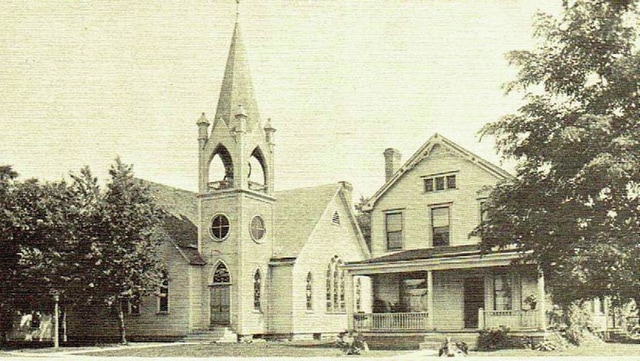
On Aug. 6 from noon until 5:30 p.m. the village of Highland Methodist Church will celebrate the community’s bicentennial with a homecoming. This week we explore the church’s early history.
Pioneer circuit riders were ministers who traveled through the wilderness to provide spiritual nourishment to the scattered and isolated pioneers. Starting in 1805, Peter Cartwright and James Quinn rode through the woods and fields of Highland County. They were part of the Scioto circuit reaching from the territory west of the Scioto River to east of the Little Miami River.
Violet Morgan, in the “Folklore of Highland County,” describes the two preachers as opposites. The Rev. Cartwright was described as a “strong, eccentric character dressed in buckskin, forceful and argumentative, and one of the greatest men of the century.”
The Rev. Quinn was summed up as “handsome, intellectual and aesthetic.” He preached the first Methodist sermon in the county in 1805 at the residence of Jane Trimble three miles north of Hillsboro.
In 1833, Quinn began regular meetings and preaching at the home of David Woodmansee Sr. The Woodmansee homestead was one mile north of the village of Highland. The meetings were held in the house, or sometimes in a barn or under a grove of trees, as was typical for the times.
By 1837, the Highland congregation decided they needed a church building. Captain Christian Emson donated the lot for a church and a cemetery. A storm came through in 1860 and damaged the wood-framed building. A new church building was erected in front of the old church. The new lot was donated by Leonard Pensyl.
Early local preachers for the Methodist Episcopal Church included David Wright, D.S. Ferguson and Thomas Dillion. During the 1880s, around 90 members attended the church.
In 1899, the Rev. James E.H. Sentman became the pastor and it was resolved to enlarge the church building. Sentman said, “Many wanted to fix the old church as cheaply as we could, but I said, ‘We are not building this church for ourselves, but for our children.’”
Sentman was a cabin maker and helped in the construction. He did much of the inside finish work. He also raised money and the church almost opened debt free on April 29, 1900. Sentman recorded, “When the dedication time came, we had no parking spaces for all the carriages, so the lot next door had to be purchased. This put us in debt.”
In the next Time Travels we’ll continue exploring the Methodist church history.
Sources Include “Through the Years: A History of New Lexington-Highland” by the Heritage Committee of 1976 Bicentennial Commission, “The History of Ross & Highland Counties, Ohio” by Williams Bros. Publishers and “The Folklore of Highland County” by Violet Morgan.
Charlotte Pack is a local author and historian. She calls her column Time Travels.


